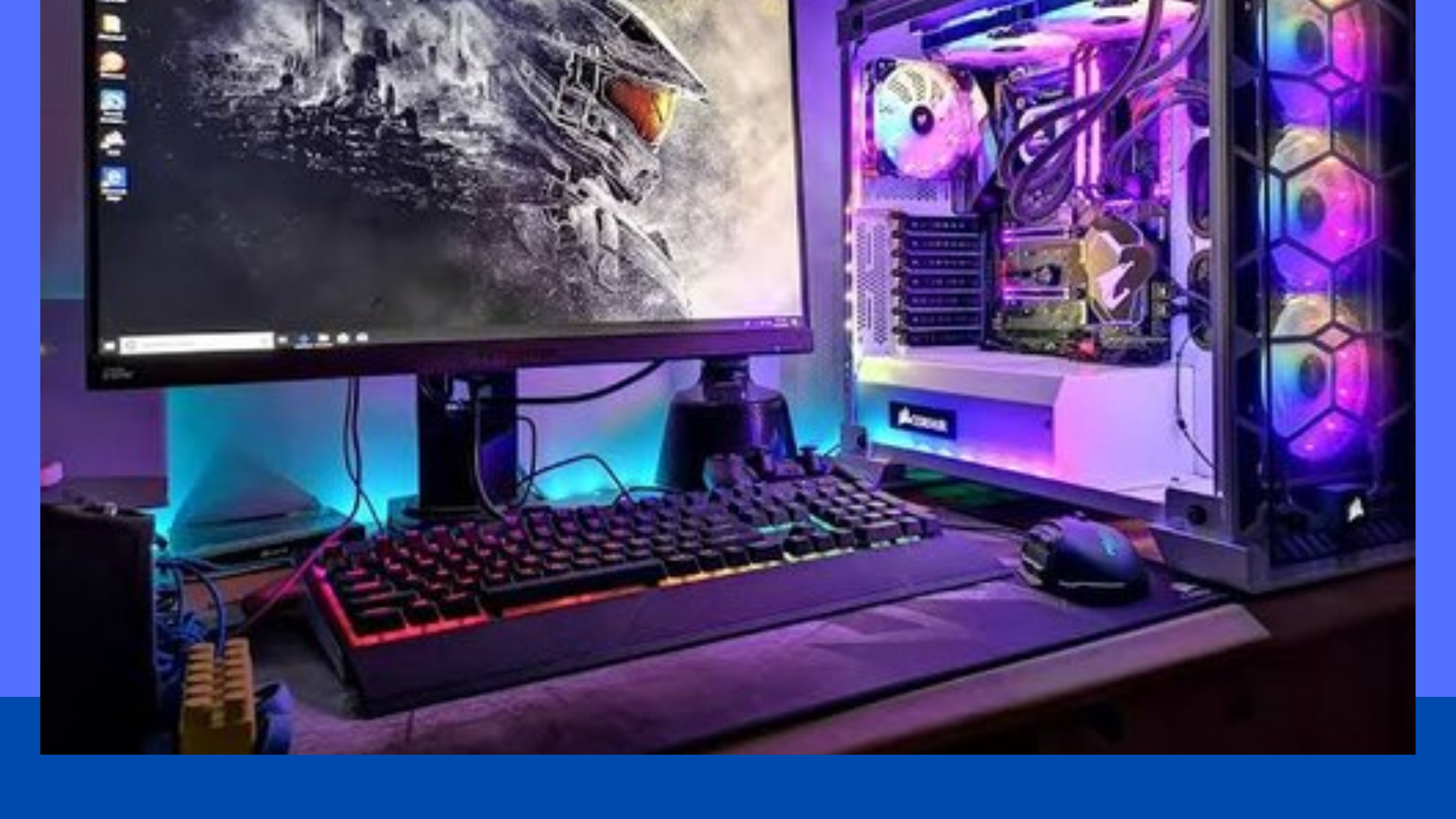Today, it is not uncommon for many of us to own and use desktop and laptop computers simultaneously or multiple types of computers to serve each of our specific needs.
The problem is that when you try to operate multiple computers simultaneously, each will have its screen, keyboard, mouse, or touchpad if you have to use all the separate peripherals. in this topic, you get the information related to How To Achieve two Monitors to use one keyboard, and Mouse.
How to use two monitors on the same mouse,andkeyboard device
You can purchase a hardware device called a KVM (short for K-Keyboard), V-Video, and Mouse converter to make things easier.
Allows you to operate one keyboard, mouse, and monitor on multiple computers with the press of a button to quickly switch between devices.
However, using the KVM Switch is not only expensive and cumbersome but also requires pressing buttons by hand every time you want to switch the control screen.
Another beneficial type of KVM conversion is that it is entirely software-based. This means you won’t need to resort to additional hardware, and the conversion will be done automatically through a utility installed on the system.
The KVM switch suite works over a local network, so all the computers you want to control must be connected via LAN. One limitation is that KVM converters do not have conversion options and only work with a keyboard and mouse.
Install the software on each computer, then configure the keyboard and mouse you want to use across devices. When everything is set up, you can switch between computers by removing the mouse pointer from the edge of each monitor.
Here are four free KVM converters that you can use to share a set of your keyboard and mouse across multiple computers.
- Synergy
- ShareMouse
- Input Director
- Mouse without Borders
-
Synergy
One keyboard and mouse can control several computers thanks to Synergy. A lot of operating systems are supported by this application.
The application works on the client-server model. A server is a computer equipped with a keyboard and mouse running the “synergys” server process.
Through a different server process known as “synergyc,” the clients connect to the server. Synergy relies on the Bonjour protocol to support host (client) discovery, address assignment, and hostname resolution.
Install the application on the central server and select Make this computer the server. For all other clients, select Make this computer the client.
Once done, you need to notify the server about the clients in your local network. Set the Synergy server configuration layout by clicking Configure Server.
Please be aware that a 5 x 3 grid has a maximum number of screens that can be used. Drag and drop the desktop icons onto the grid in the desired arrangement.
Double-click the client icons to rename the computer (if necessary), and set up modifier keys and dead corners. Finally, click OK and restart the Synergy application installed on the server.
Note the IP addresses at the top of the main Synergy window. You will use the server IP address on each client to connect.
Although Synergy will automatically connect the server to the client, the above procedure will be used if things don’t work.
With Synergy, you can move the mouse freely from UAC (set Elevated privileges to Always to unlock this), copy and paste clipboard data to other systems (Advanced server settings > Enable clipboard sharing), and lock the remote Windows PC with Ctrl + Alt + Del.)

-
ShareMouse
You can share your keyboard and mouse with various computers on your local network using the program ShareMouse.
The software is designed to work similarly to a physical KVM switch. ShareMouse has been around for a few years, there are paid versions, but there are also free versions that still ensure full support for the most basic features.
More advanced features like a lock, screensaver, remote shutdown, drag and drop, prevent conversion, password protection, and use on more than two computers will only be available on the paid versions..
Another plus of ShareMouse is that you can use the full installer or a portable version designed for USB flash drives.
This installer will be preferred if you have UAC enabled because ShareMouse can be installed as a service to help with usage rights issues. Run the Sharemouse.exe file as administrator
if you’re using the portable version and UAC is turned on.
Share mouse will automatically identify and connect two computers once they have been installed or are currently running on both.
If no connections are automatically established, navigate to Settings > Network and click the Find free port button for both TCP and UDP, then try connecting again. Professionals can use the Clients window to establish a connection manually.
Once the computers are connected, go to Monitor Manager in the system tray menu. Here you can arrange the screens by dragging the available screens to change their order and move the screens to the position to suit your needs. They may be put above, below, or on the sides.
Most features will be disabled in the accessible version of ShareMouse, but a few options still work, and you can change them.
For example, you can synchronize the clipboard using copy + paste or Ctrl + V, although the publisher says this is a paid feature.
Alternatively, you can press Escape XX times to cancel the remote, switch between hotkeys, dim the screen, and adjust the scroll speed and direction.
You can use ShareMouse for free for as long as you like; if you enable one of the paid features (settings labeled [Demo] or connect more than two computers, the program will enter Demo mode, which will allow you to use the features).
For up to 30 minutes before ShareMouse displays a message and immediately disconnects. You will then have to restart the program on all connected computers to continue using it. So don’t use any demo features if you don’t want to waste time rebooting.
-
Input Director
Since 2007, Input Director has been available without limitations for private use. It is also compatible with many different versions of Windows, from Windows XP to Windows 10.
In this respect, Input Director seems more complicated to set up and use than other software but in fact, it’s not that hard.
There are also some options for advanced users, but most people probably won’t need to use those settings.
First, you install Input Director on the secondary and primary computers, but you must configure the secondary machine first.
Go to the Slave Configuration tab after clicking Enable as an enslaved person on the software interface.
To make the settings more accessible, you can turn on the option Allow any computer to take control (allow any computer to take control) or click Add and then enter the hostname of the controlling computer accurately by hand. The hostname will be in the Main tab on the main computer.
Now, move to the main computer (the computer with the mouse and keyboard will be used) and click the Enable as Master button in the Input Director window.
Access the Master Configuration tab, click Add and enter the hostname of the secondary computer (the hostname is on the Main tab of the secondary computer), then click OK.
Next, you use the empty box in the center of the window to drag the icons and position of the second monitor relative to the main system screen, top, bottom, left, and right!
The mouse can now move between screens in the selected direction. There is a slight ripple effect around the pointer as it moves between screens.
Drag and drop operations are not usable, but the software supports clipboard sharing so that you can copy and paste files and folders.
In addition, AES encryption can also be used to enhance security. To perform this setup, you must use the same encryption and password settings on the secondary and primary computers.
In sync, system mouse and keyboard settings, and finally mirror input. Also, Input Director acts as a service, so UAC shouldn’t cause any problems.
-
Mouse without Borders
The free software allows up to four computers with one mouse and keyboard. It is fully compatible with Windows versions from XP to Windows 10.
The easy way to set things up in Mouse without Borders is through the wizard. First, you must install Mouse without Borders on the secondary computer and click No when asked if the software is installed on another computer.
After that, a window with the computer name and security code will be opened. Leave this window, and you will start installing the program on the main computer with the mouse and keyboard.
Click Yes and enter the computer name and security code that you see appear on the secondary computer. Then click Link to connect these computers.
The program’s main window checkboxes can turn specific computers on or off. Drag the computer left or right so you can move the mouse away from the left or right edge of the desktop.
Checking the Two Row item, you will see that up to four computers will form a grid consisting of four squares containing two rows; each row will have two computers.
For example, at the bottom left, the computer in the grid will be able to move the mouse up or right over other desktops.
In addition, Mouse Without Borders also supports drag, drop, and clipboard functions, but both have certain limitations.
You cannot transfer folders, so a folder must be archived before sending. Additionally, a single file can only be transferred at once.
There will be no other file transfer locations; it will be sent directly to a default folder on the desktop called MouseWithoutBorders
Although most everyday users won’t require them, several configuration options exist. These include editing shortcuts, blocking screen corners, blocking screensavers, sharing clipboards, and disabling Easy Mouse.
There will be helpful information if the program has trouble locating other computers on the network or accessing the IP Mappings tab.
Note: If you cannot install Mouse Without Borders, ensure the Windows firewall is enabled, even if you have a third-party firewall installed.
Final Thoughts
Above are four software that allows you to share peripherals between many different computers. You can use two monitors with different peripherals and play two different games simultaneously without any problems.
Related article
RAM, CPU, GPU & their Separate Responsibilities in Gaming?(Explained)

